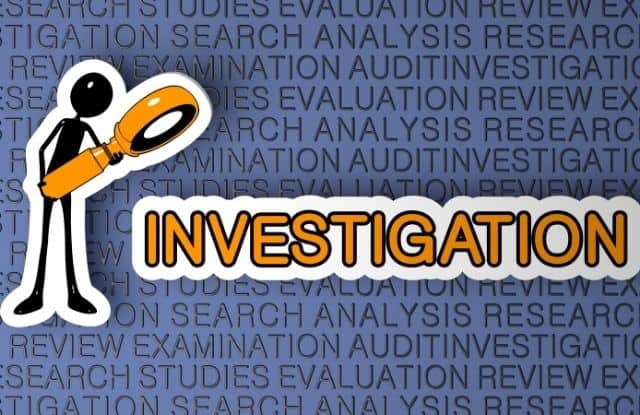Hiring A Lawyer For Company Investigations
Workplace investigations are not like pre-litigation investigations in civil claims. In civil actions, the defendant’s investigation is not taken seriously. However, in claims involving employment discrimination, the employer’s investigation of a complaint is an essential element of the subsequent litigation.
Here is a look at the duty to investigate, how to obtain a workplace investigation, and attacking an investigation.
The Duty To Investigate
According to California law, when an employer receives a complaint concerning harassment or discrimination, they are required to conduct an impartial and thorough investigation into the matter.
In some cases, the investigations are conducted internally by a Human Resources professional or legal agent. For serious cases that implicate senior members of the organization, the employer may hire an outside workplace investigator.
Companies that fail to perform an investigation into claims such as discrimination or harassment, face the risk of heavy legal consequences. In the case of Crawford v. Metropolitan Government of Nashville and Davidson County, the Supreme Court ruled in favor of Crawford.
The suit was filed when the Metropolitan Government of Nashville and Davidson County investigated rumors that a Metro School District’s senior employee, Gene Hughes, was involved in sexual harassment.
Crawford and two other employees described the ways that Hughes harassed them, and their testimony was enough to have them fired. However, Hughes remained on the job. Crawford was fired on the grounds of embezzlement.
Crawford later filed a claim with the Equal Employment Opportunity Commission and the U.S. District Court For Tennessee. Crawford’s claims were based on discrimination for opposing an illegal employment practice.
The district court ruled against Crawford, claiming that she could not oppose anything since the investigation was pending. The court of appeal upheld the decision of the district court. However, when Crawford took her case to the Supreme Court, the ruling went in her favor.
The consequences of the corrupt handling of the incidents resulted in costly litigation, which ended in the Supreme Court, and it also ruined the school district’s reputation.
Obtaining The Workplace Investigation
After a workplace investigation, it is the right of the employee to inspect their personnel files. According to the California Labor Commission, personnel files include Investigation of EEOC or Fair Employment Practices Commission matters.
This means, if a current employee wants to review an investigative file and a criminal defense lawyer did not conduct the investigation into the crime, the employee is entitled to see it as a part of the personnel file.
However, if the employer’s lawyer balks, the investigation will be discoverable. It is worth noting that the Labor Code does not mandate the employer to provide the personnel file but only documents that have the employee’s signature.
If a lawyer conducted the investigation, the personnel file won’t be turned over when the employee requests it. However, it can be handed over at the attorney’s request.
Attacking The Investigation
Assuming you have received the investigatory file, the next step is to find potential inadequacy or bias in the investigation. Generally, the investigatory report consists of fact-finding that either confirms or refutes allegations.
Sometimes the report makes no determination. Many reports do not reach a conclusion, such as “this was an act of discrimination.” However, an investigatory file may confirm that company policy was violated.
The areas you should analyze when attacking an investigation include the investigator, the timing of the investigation, and the comprehensiveness of the investigation. Finally, you have to determine whether the employer’s action was adequate.
Was The Right Investigator Chosen?
The deposition of the investigator should center on their skills and relationship with the parties involved. If the deposit involves an outside investigator, you should determine whether they are a member of AOWI (Association of Workplace Investigators), a union for workplace investigators.
AOWI performs annual training for workplace investigators. The investigator should be asked whether they have completed the AOWI training. When deposing an investigator, your aim should be to determine their credentials and experience.
Was The Investigation Initiated Promptly?
The aim here is to contest a delayed investigation. When an employer receives a complaint of harassment or knows that there is harassment in the workplace, they should begin investigations promptly.
Therefore, you should determine when the investigation began. A delay in beginning investigations can be characterized as indifference, approval, or acquiescence to the harassment.
A delayed investigation goes against the FEHA Government Code, which makes it unlawful for employers to fail to take prompt and appropriate corrective action. Most courts have ruled that an investigation that starts within one day to a week is prompt enough.
Was The Investigation Thorough?
A well-conducted sexual harassment investigation is thorough. It is not enough for an employer’s investigation to be based on interviews involving the complainant and alleged harasser.
This is inadequate and the employer may conclude that the claims are unsupported. The complainant should be required to present corroborative witnesses whom the investigator should question.
An investigator who finalizes their investigation with a conclusion of “no substantiation” is likely to be subjected to deposition questioning regarding the thoroughness of their investigation.
Was The Employer’s Action Adequate?
After an employer has received the investigatory report and determined that discrimination or harassment occurred, they must take action to stop the harassment and reduce the chances of reoccurrence.
Some of the remedial actions include a verbal or written reprimand, the perpetrator’s transfer, and discharge of the harasser. You need to determine whether there was appropriate disciplining of the harasser.
In Conclusion
The law requires employers to investigate employee claims regarding sexual harassment or discrimination. These investigations are subject to scrutiny by the claimant’s lawyer.
After obtaining the investigative report, the claimant’s lawyer can poke holes into the report by reviewing the investigator’s credentials, the timing of the investigation, the thoroughness of the investigation, and the employer’s remedial action.






